- Home
- David Weber
Honor Among Enemies hh-6 Page 8
Honor Among Enemies hh-6 Read online
Page 8
Honor had her own reasons to dislike Admiral of the Red Lady Sonja Hemphill. "Horrible Hemphill," as she was known to certain segments of the Fleet, was the leading spokesperson of the jeune ecole, the Navy faction which rejected the "traditionalist" views of officers like Earl White Haven. Or, for that matter, of Lady Honor Harrington. Hemphill was willing to admit the study of classic strategy and tactics had something to offer, but she argued, vehemently, that doctrine had petrified. The weapons of modern ships of the wall were the product of incremental improvements on a theme which had been established T-centuries earlier, and in consequence, the tactics for their employment had been thoroughly explored. In Hemphill’s view, that exploration equated to stultification, and the jeune ecole proposed to shatter the "log jam of outdated concepts" by introducing new weapons. Their idea was to introduce technologies which were so radical that no navy which failed to adopt them could hope to survive against one which did.
To a considerable extent, Honor agreed with both their analysis and their ambition. She didn't believe in magic bullets, but the tactician in her hated the formalism which had become the norm, and the strategist in her hungered for some way to fight battles which would be decisive, not attritional affairs from which the weaker force was free to disengage.
Given the distances involved in interstellar warfare, launching some sort of lightning thrust to an enemy's vital nerve center, like the Haven System, usually meant uncovering your own strategic center. If you had sufficiently overwhelming strength, you might be able to protect your own critical areas while simultaneously attacking his, but in a serious war that was seldom the case. Armchair strategists forgot that when they demanded to know why a navy bothered to fight for intervening systems. Ships could move freely through the immensity of space and, with judicious routing, avoid interception short of their target, so why not simply do it? The Peoples Republic, after all, had carried out dozens of such strokes in its fifty-odd years of conquest.
But the Peeps had been able to do that only because their opponents' navies had been too small to mount serious defenses. The RMN, however, was large enough to give even the People's Navy pause, and in a war between serious opponents both sides knew their fleets could strike straight for the others core systems. Because of that, neither was willing to uncover its own vitals. Instead, they maintained fleets and fortifications they hoped were capable of protecting those areas and conducted offensive operations only with what was left over, which meant their own offensive forces were seldom powerful enough to execute the daring stroke the amateurs thirsted for. That was why they wound up fighting for star systems between their home systems and the enemy's. The systems targeted were normally chosen for their own inherent value, but the true object was to compel the enemy to fight to hold them... and give yourself the chance to whittle away at his strength until he could no longer simultaneously protect himself and attack your own strategic center. That was precisely why Admiral White Haven and Sixth Fleet were so intent on taking Trevor’s Star. Not only would it eliminate a threat to the Manticore System and greatly simplify the Alliances logistic problems, but fighting as far forward as possible in Havenite space would keep the Peeps on the defensive which, hopefully, would force them to fight on the Alliances terms... and preclude any temptation they might feel to attempt a "daring stroke" of their own. They'd already tried that twice, once in the war's opening phases, and again in Yeltsin barely a year ago, and no one in the Alliance wanted them to feel tempted to try a third time.
It wasn't the fastest way to win a war, and Honor would have loved to launch the sort of attack the armchair warriors advocated. Unfortunately, you could only get away with that against an opponent who let you, and whatever else one might say about the Peeps, they'd been in the conquering business too long to let that happen. That meant the destruction of their fleet, and thus their ability to sustain offensive or defensive operations, was the only workable strategic goal. The more quickly and decisively the Manticoran Alliance could achieve that destruction, the fewer of its own people it would lose along the way, and Honor was in favor of anything, even if it was suggested by Horrible Hemphill, which could speed that process up.
Some of the traditionalists, however, were, exactly as the jeune ecole argued, simply afraid of change. They understood the present rules, and they had no desire to face a radically different combat environment in which their advantages in experience became irrelevant. Honor understood that, and she disagreed with them at least as strongly as she did with the jeune ecole, just as she knew White Haven did. The problem was that Hemphill had fought so hard for changes that she seemed to see any new concept as desirable simply because it was new.
Worse, for all her talk of new weapons, she was firmly wedded to the concept of material warfare... which was simply another term for the very sort of attrition Honor wanted to break free of. Hemphill’s ideal was to wade straight into the enemy, hopefully equipped with superior weapons, and simply keep smashing until something gave. Sometimes that was the only option, but officers like Honor and White Haven were appalled by the body counts the jeune ecole was prepared to accept.
What was really needed, Honor often thought, was someone who could fuse the tenets of the competing philosophies. Admiral White Haven had accomplished some of that with his insistence that there was room for new weapons but that those weapons must be carefully evaluated and fitted into classic concepts. He and a handful of other senior officers, like Sir James Webster, Mark Sarnow, Theodosia Kuzak, and Sebastian D'Orville, had made a start in that direction, but every time they gave a centimeter, Hemphill and her fellows thought they saw the opposition crumbling and charged to the attack, demanding still more and quicker change.
None of which was to say that Hemphill hadn't accomplished a lot that was worthwhile. The RMN's short-range FTL communication capability stemmed directly from one of her pet projects, and so had the new, improved missile pods. There were rumors of other projects simmering away on various back burners which might produce equally valuable innovations, and if only Hemphill were less... vociferous, Honor would have had no reservations. Unfortunately, then-Commander Harrington had been on the receiving end of one of Horrible Hemphill's efforts to force a radical (and radically flawed) concept into general deployment. She'd been compelled to take the resultant experimental armament into a fight to the death, against a Peep Q-ship, which had killed half her crew and battered her ship into scrap, and that was enough to make her take any Hemphill-authored suggestion with a very large grain of salt.
In this instance, however, Hemphill's brainchild was impressive, particularly in light of Honor's personal experience of how dangerous a well-handled Q-ship could be.
She floated in zero-gee, and the surface of her brain listened attentively to everything Schubert said. She knew she'd be able to replay the entire conversation verbatim later, but for now her inner thoughts were busy with what she'd already learned about Project Trojan Horse.
The Peep Q-ships like the one Honor had tangled with had been purpose built from the keel out. In effect, they were warships disguised as merchantmen, with military-grade impellers, sidewalls, and compensators to match their armament. Under normal circumstances, they could expect to hold their own against even a battlecruiser, because they'd been built with the toughness to absorb heavy damage and remain in action.
That was the biggest weakness of Trojan Horse, for the Caravan class were true merchantmen, big, slow, bumbling freighters, without armor, without military-grade drives, without internal compartmentalization or a warships sophisticated damage control remotes. Their hulls were the flattened, double-ended spindles of any impeller drive vessel, but they'd been laid out to maximize cargo-handling efficiency, without a warship's "hammerhead" ends, where the hull flared back out to mount powerful chase armaments. They'd also been built with only one power plant apiece which, like many of their vital systems, were deliberately placed close to the skins of their hulls to facilitate access for maintenance a
nd repair. Unfortunately, that also exposed them to hostile fire, and though Vulcan had added a second fusion plant deep inside Wayfarer's hull, no one in her right mind would ever consider her a "proper" warship.
But the undeniably fertile imagination of Hemphill’s allies in BuShips had given her Q-ships some advantages the Peeps had never thought of. For one thing, their energy batteries would come as a major surprise to anyone unfortunate enough to enter their range. The Peeps' Q-ships had settled for projectors heavy enough to deal with cruisers and battlecruisers, but Hemphill had taken advantage of a bottleneck in the super-dreadnought building schedule. Weapons production had gotten well ahead of hull construction, so Hemphill had convinced the Admiralty to skim off some of the completed lasers and grasers sitting around in storage. Wayfarer had barely half the energy mounts of her Peep counterparts, but the ones she did have were at least three times as powerful. If she ever got close enough to shoot anyone with those massive beams, her target was going to know it had been kissed.
Nor would any raider enjoy taking her on in missile combat. Since the Trojans were intended as armed cruisers, Hemphill had convinced the Admiralty to go whole hog and delete all cargo carrying capacity, aside from a generous allowance for spares and other maintenance items. Even after cramming in all the additional life support Wayfarer's Marines and weapons crews would require, that left the designers an enormous cubage, after all, a Caravan massed 7.35 megatons, and they'd shown a devious inventiveness. They'd provided magazine space for a stupendous ammunition supply for her twenty broadside missile tubes, which, like her energy weapons, were as heavy as one would normally find in a Gryphon-class SD. It made sense to give a vessel which might be called upon to operate outside the logistic pipeline for extended periods as much ammunition stowage as possible, but that was an almost secondary consideration where her broadside armament was involved, for the Trojans' real long-range punch was a totally new departure which Honor found herself totally and unequivocally in favor of.
Wayfarer's Number One Hold had been reconfigured solely to carry missile pods. Its size gave her room for literally hundreds of them, and judicious modification to her stern meant she could do something no regular warship could. A superdreadnought might tractor as many as ten or twelve pods inside her impeller wedge to deploy when she needed them. Smaller warships, with tighter, less powerful wedges, were forced to tow them astern, where they degraded acceleration rates and were also vulnerable to proximity "soft kills," since they were outside the towing ship's sidewall. Wayfarer, however, lacked the traditional stern chasers which normally crammed the aft section of a warship to capacity. Her limited after beam, compared to a warship, had created some problems, but a little ingenuity on Schubert's part had allowed Vulcan to extend Number One Hold almost to the stern plate. That meant her repositioned cargo doors could be used to dump cargo directly out the after aspect of her impeller wedge, which couldn't be closed with a sidewall anyway, and her ejector rails would allow her to launch salvos of six ten-missile pods at the rate of one salvo every twelve seconds. In effect, she could put an additional three hundred missiles per minute into space.
Nor had the designers stopped there. Since they had all that space available, they'd outfitted holds Three and Four as LAC bays. Traditional light attack craft were considerably inferior to hyper-capable warships for many reasons. Their small size left no room for hyper generators, so they couldn't translate into or out of h-space. Nor could they mount Warshawski sails, which meant they couldn't be employed inside the grav waves starships normally rode even if they could somehow be gotten into hyper in the first place. Their relatively weaker impeller wedges and sidewall also made them more fragile than larger warships, and they were too small to pack in worthwhile amounts of armor or sufficient armament for sustained combat. They were eggshells armed with hammers, equipped with heavy missile loads for their displacement, usually in low-mass, single-shot box launchers, and against most opponents about the best they could hope for was to get their missiles off before they were annihilated.
But the new LACs the Star Kingdom had been laying down over the last four T-years (also, Honor admitted, as one of Hemphill’s brainstorms) were a whole new breed. BuShips had made enormous strides in inertial compensator design, building on the original research Grayson had undertaken when no one would tell them how compensators worked. Denied the advantage of everyone else’s knowledge, or the limitations of everyone else’s assumptions, Grayson’s Office of Shipbuilding had innocently followed up a concept everyone else "knew" wouldn't work and opened the door to an entirely new level of compensator efficiency. BuShips hadn't thought of it first, but the Star Kingdoms shipbuilders had an immense store of technical expertise, and they were improving upon Grayson's groundwork steadily. Honor’s last Manticoran ship, the battlecruiser Nike, was barely four years old, and she'd been fitted with what was then the newest and best Manticoran compensator, based on the original Grayson research. Ships now on the drawing board would be equipped with compensators which increased Nike's level of efficiency by an additional twenty-five percent. . . and Wayfarer's LACs already had them. Fitted with more powerful impellers to match, they could pull over six hundred gravities of acceleration, and that made them the fastest sublight ships in space, for the moment.
They also mounted much heavier sidewalls and semi-decent energy armaments to back up their missile cells. They'd given up something in terms of total throw weight to squeeze all that in, but they were faster, tougher, and far more dangerous within the energy envelope, and even at long range, their new launchers, using the same technology as the missile pods, let them throw missiles which were individually much heavier and more capable.
More to the point, perhaps, most pirates weren't proper warships, either. A single one of the new LACs was as heavily armed as a typical raider, and Wayfarer had been reconfigured to carry six of them in each of her modified cargo holds. Anywhere except in a grav wave, she could multiply her force level by dropping no less than twelve modern and, for their size, powerful parasite warships into the engagement.
Her biggest weakness was that it had been impossible to upgrade her drive without literally tearing her apart and starting over. She'd been built originally as a fleet collier and equipped with light sidewalls, which had been upgraded as far as possible, and Vulcan had also managed to upgrade the radiation shielding inside those sidewalls, but in many ways, she was a LAC on the grand scale. She could knock the stuffing out of most opponents, especially if she took them by surprise, but she was hopelessly incapable of absorbing much damage of her own.
All in all, Honor thought as Schubert finished his explanation and soared off to show her the next point of interest, Wayfarer and her sisters might just prove more effective in the Breslau Sector than even the Admiralty was willing to believe. Honor had once spent most of a two-year commission in Silesian space, chasing pirates in the heavy cruiser Fearless. She knew the area at least as well as most Manticoran officers, and she'd never met the pirate who could stand up to what Wayfarer could hand out. Some of the "privateers" who also plagued the Confederacy might be another story, some of them could nearly match a battlecruiser's offensive power, but they were few and far between and, for the most part, careful to avoid Manticoran shipping. That could have changed with so much of the Fleet diverted to the battle front, but privateers had to worry about the "liberation governments" they nominally represented. No breakaway star system wanted to irritate the Star Kingdom unduly, and at least one "privateer" had found itself seized by its own government, its entire crew handed over to the Manticoran courts, when that government had been informed of what would happen to it if the offending crew wasn't surrendered.
No, she mused thoughtfully, with a decent ship's company behind her, she wouldn't be unduly worried about taking on any pirate or privateer she'd ever heard of, and she realized she was actually beginning to look forward to the assignment after all.
Chapter SIX
Admiral of th
e Green Sir Lucien Cortez, Fifth Space Lord of the Manticoran Navy, stood behind his desk as his yeoman ushered Honor Harrington into his office. The last three days had been a whirlwind for her. She'd managed to steal a few hours to visit her parents, but every other available instant had been spent crawling around her new ship's gizzards and discussing her modifications with Vulcan's experts. There was no time for any major changes in the original plans, but she'd been able to suggest a couple of improvements which could still be incorporated. One was an additional lift cross-connecting the two LAC holds, which would allow service personnel to move much more easily under normal conditions and cut the time required for the LAC crews to man their ships in a "scramble" situation by twenty-five percent. That was the more fundamental and labor intensive of the two, and BuShips had hemmed and hawed for thirty-six hours before authorizing it.
Her other suggestion had been much simpler and more subtle. When she'd gone after the Peep Q-ship Sirius in Basilisk, her first warning that her opponent was armed had come when the Peeps jettisoned the false plating concealing their weapons bays and her radar picked up the separating debris. Partly in response to that portion of her own after-action report, Vulcan had provided the Trojans with powered hatch covers rather than false plating and gone to some lengths to make the covers look like standard cargo hatches. It had been a laudable idea, but by the time they provided for LAC launch bays, as well, there were far too many "cargo hatches" along Wayfarer's flanks to fool anyone who got a decent optical on her.
Unless, of course, the hatches were invisible, which was why Honor had proposed covering them with plastic patches formed and painted to blend perfectly with the surrounding hull. The patches, she'd pointed out, would be invisible to radar. They could be jettisoned for action without any betraying radar detection, they'd be cheap, they could be fabricated in mere days, and her ships could stow hundreds of them away for replacement after each action.

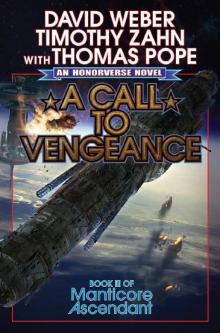 A Call to Vengeance
A Call to Vengeance March Upcountry
March Upcountry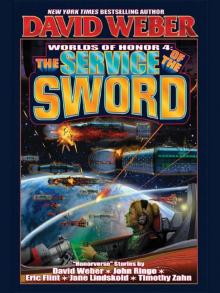 The Service of the Sword
The Service of the Sword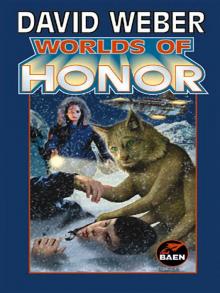 Worlds of Honor
Worlds of Honor The Sword of the South
The Sword of the South Mission of Honor
Mission of Honor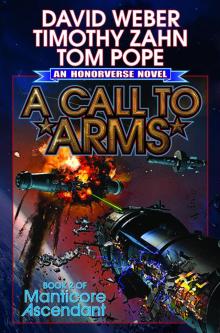 A Call to Arms
A Call to Arms The Captain From Kirkbean
The Captain From Kirkbean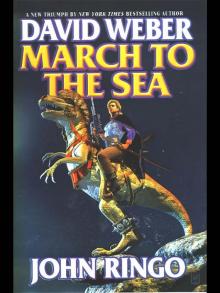 March to the Sea
March to the Sea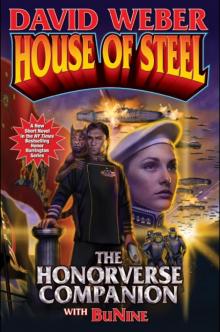 House of Steel: The Honorverse Companion
House of Steel: The Honorverse Companion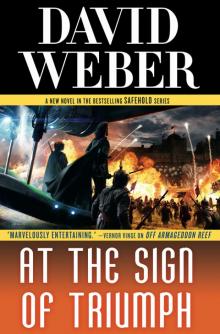 At the Sign of Triumph
At the Sign of Triumph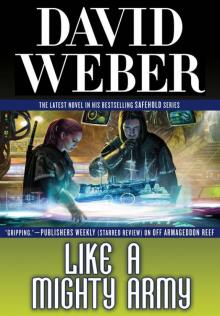 Like a Mighty Army
Like a Mighty Army Heirs of Empire
Heirs of Empire March to the Stars
March to the Stars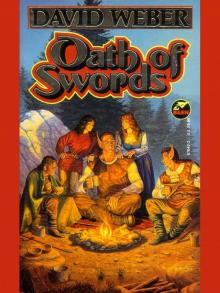 Oath of Swords
Oath of Swords On Basilisk Station
On Basilisk Station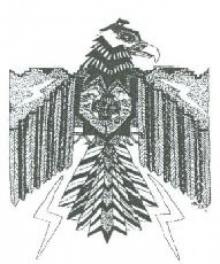 Oath of Swords and Sword Brother
Oath of Swords and Sword Brother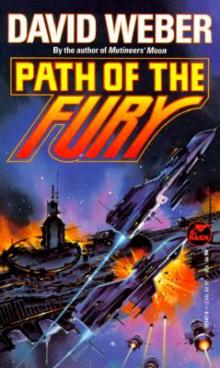 Path of the Fury
Path of the Fury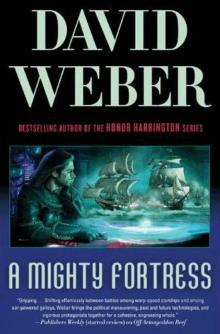 A Mighty Fortress
A Mighty Fortress War of Honor
War of Honor 1633
1633 In Fury Born
In Fury Born Crusade
Crusade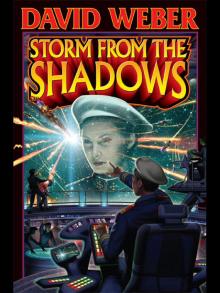 Storm From the Shadows
Storm From the Shadows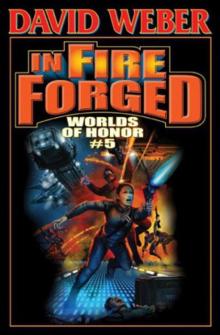 In Fire Forged
In Fire Forged A Beautiful Friendship
A Beautiful Friendship Into the Light
Into the Light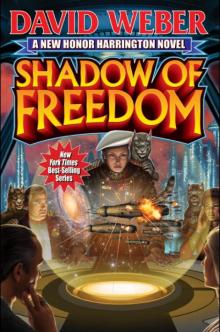 Shadow of Freedom
Shadow of Freedom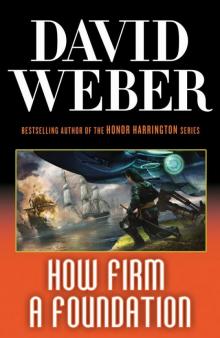 How Firm a Foundation
How Firm a Foundation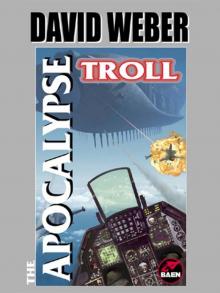 The Apocalypse Troll
The Apocalypse Troll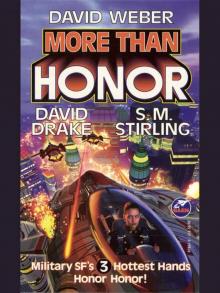 More Than Honor
More Than Honor Crown of Slaves
Crown of Slaves The Gordian Protocol
The Gordian Protocol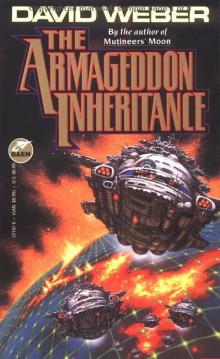 The Armageddon Inheritance
The Armageddon Inheritance Out of the Dark
Out of the Dark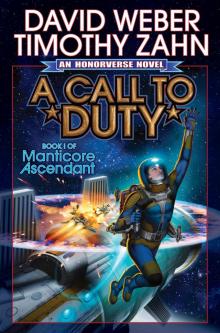 A Call to Duty
A Call to Duty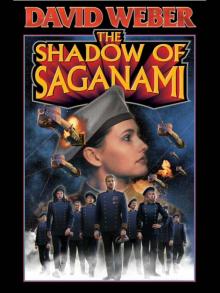 The Shadow of Saganami
The Shadow of Saganami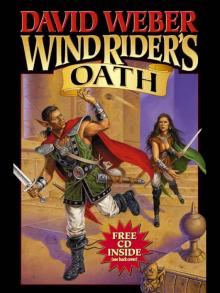 Wind Rider's Oath
Wind Rider's Oath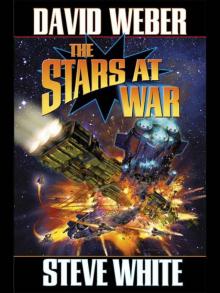 The Stars at War
The Stars at War Uncompromising Honor - eARC
Uncompromising Honor - eARC Fire Season
Fire Season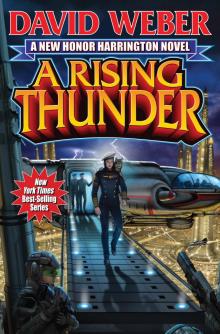 A Rising Thunder
A Rising Thunder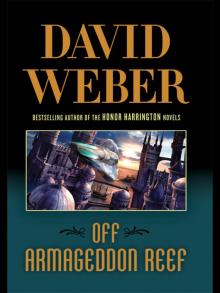 Off Armageddon Reef
Off Armageddon Reef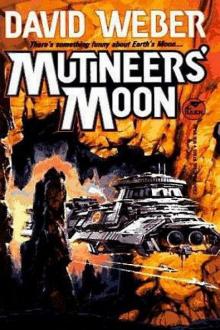 Mutineer's Moon
Mutineer's Moon Hell Hath No Fury
Hell Hath No Fury Worlds of Weber
Worlds of Weber Through Fiery Trials--A Novel in the Safehold Series
Through Fiery Trials--A Novel in the Safehold Series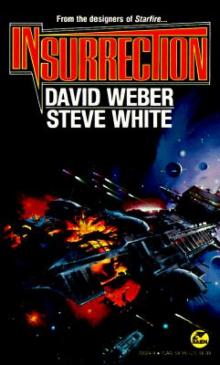 Insurrection
Insurrection By Heresies Distressed
By Heresies Distressed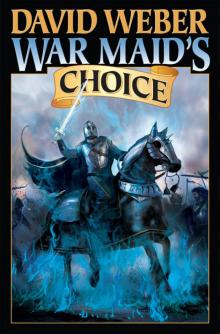 War Maid's Choice
War Maid's Choice At All Costs
At All Costs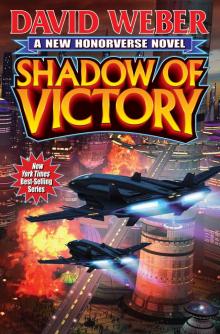 Shadow of Victory
Shadow of Victory Through Fiery Trials
Through Fiery Trials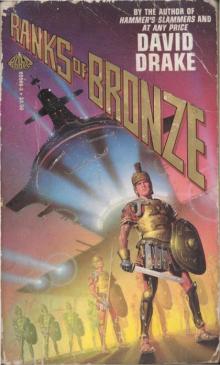 Ranks of Bronze э-1
Ranks of Bronze э-1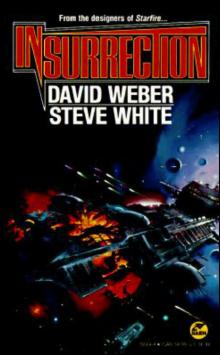 The Insurrection
The Insurrection Safehold 10 Through Fiery Trials
Safehold 10 Through Fiery Trials Old Soldiers
Old Soldiers In Death Ground s-2
In Death Ground s-2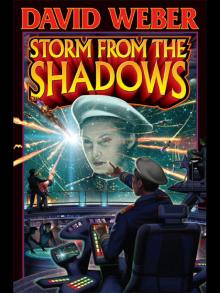 Storm from the Shadows-OOPSIE
Storm from the Shadows-OOPSIE In Enemy Hands hh-7
In Enemy Hands hh-7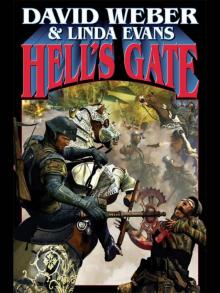 Hell's Gate-ARC
Hell's Gate-ARC The Armageddon Inheritance fe-2
The Armageddon Inheritance fe-2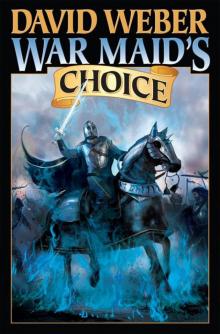 War Maid's choice wg-4
War Maid's choice wg-4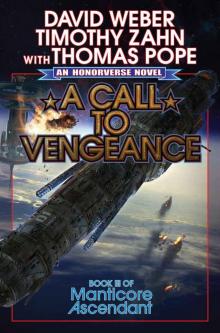 A Call to Vengeance (Manticore Ascendant Book 3)
A Call to Vengeance (Manticore Ascendant Book 3) Heirs of Empire fe-3
Heirs of Empire fe-3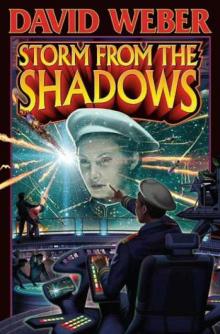 Storm From the Shadows si-2
Storm From the Shadows si-2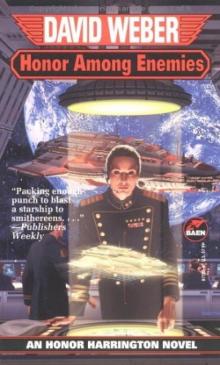 Honor Among Enemies hh-6
Honor Among Enemies hh-6 Changer of Worlds woh-3
Changer of Worlds woh-3 Bolo! b-1
Bolo! b-1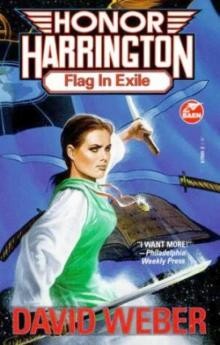 Flag In Exile hh-5
Flag In Exile hh-5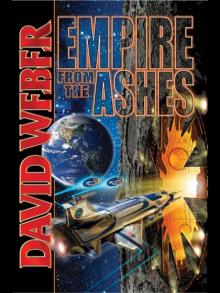 Empire from the Ashes
Empire from the Ashes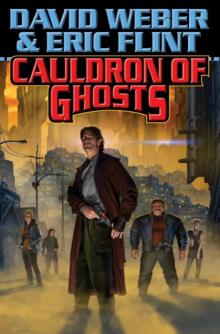 Cauldron of Ghosts
Cauldron of Ghosts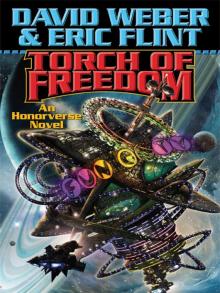 Torch of Freedom
Torch of Freedom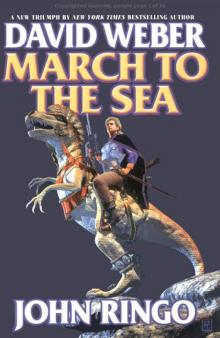 March To The Sea im-2
March To The Sea im-2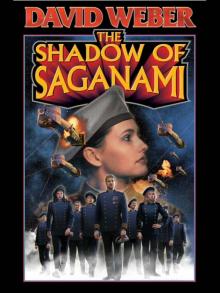 Shadow of Saganami
Shadow of Saganami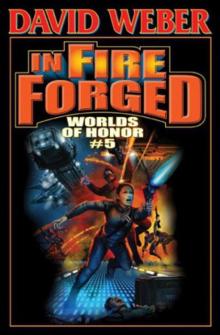 In Fire Forged: Worlds of Honor V-ARC
In Fire Forged: Worlds of Honor V-ARC Cauldron of Ghosts (eARC)
Cauldron of Ghosts (eARC)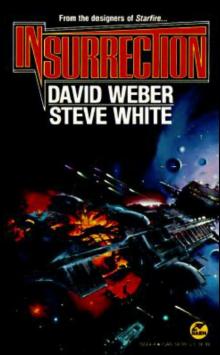 Insurrection s-4
Insurrection s-4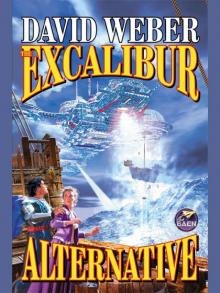 The Excalibur Alternative
The Excalibur Alternative Shadow of Freedom-eARC
Shadow of Freedom-eARC The Short Victorious War
The Short Victorious War Manticore Ascendant 1: A Call to Duty (eARC)
Manticore Ascendant 1: A Call to Duty (eARC)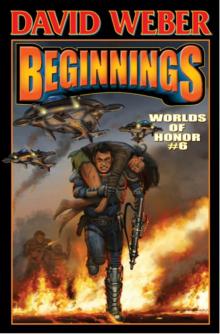 Beginnings-eARC
Beginnings-eARC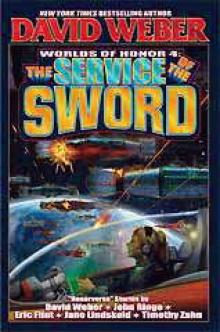 The Service of the Sword woh-4
The Service of the Sword woh-4 The Sword of the South - eARC
The Sword of the South - eARC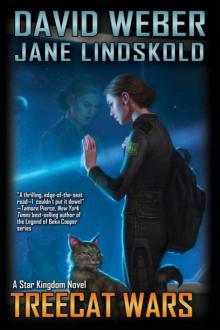 Treecat Wars sh-3
Treecat Wars sh-3 Worlds of Honor woh-2
Worlds of Honor woh-2 Fire Season sk-2
Fire Season sk-2 March To The Stars im-3
March To The Stars im-3 Echoes Of Honor hh-8
Echoes Of Honor hh-8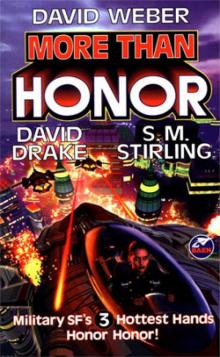 A Beautiful Friendship mth-1
A Beautiful Friendship mth-1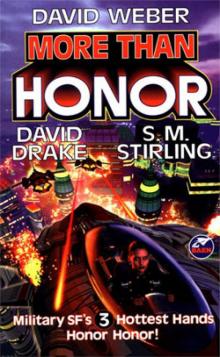 The Universe of Honor Harrington mth-4
The Universe of Honor Harrington mth-4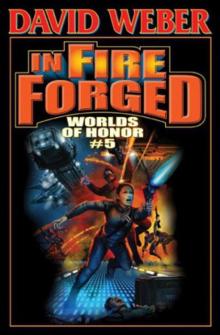 In Fire Forged: Worlds of Honor V
In Fire Forged: Worlds of Honor V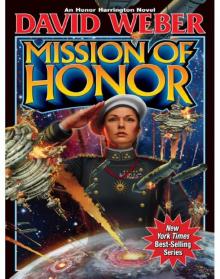 Mission of Honor-ARC
Mission of Honor-ARC March Upcountry im-1
March Upcountry im-1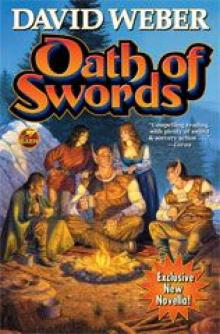 Sword Brother wg-4
Sword Brother wg-4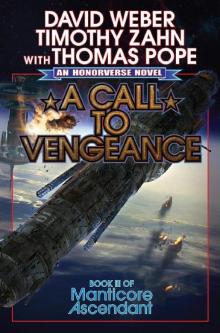 Manticore Ascendant 3- A Call to Vengeance
Manticore Ascendant 3- A Call to Vengeance We Few
We Few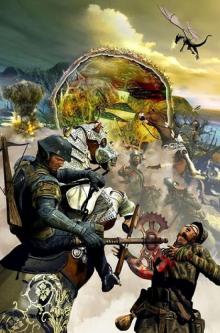 Hell's Gate m-1
Hell's Gate m-1 Throne of Stars
Throne of Stars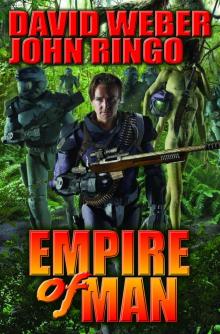 Empire of Man
Empire of Man The War God's Own wg-2
The War God's Own wg-2 Wind Rider's Oath wg-3
Wind Rider's Oath wg-3 A Rising Thunder-ARC
A Rising Thunder-ARC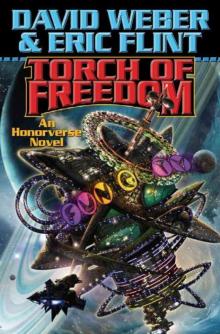 Torch of Freedom wos-2
Torch of Freedom wos-2 War Of Honor hh-10
War Of Honor hh-10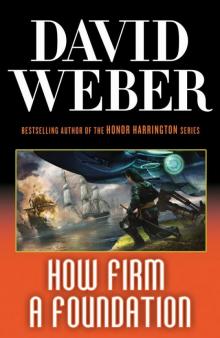 How Firm a Foundation (Safehold)
How Firm a Foundation (Safehold)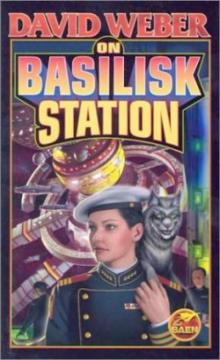 On Basilisk Station hh-1
On Basilisk Station hh-1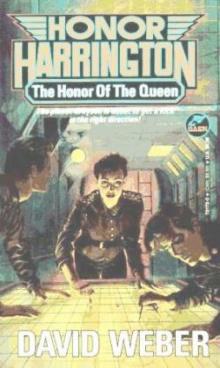 The Honor of the Qween hh-2
The Honor of the Qween hh-2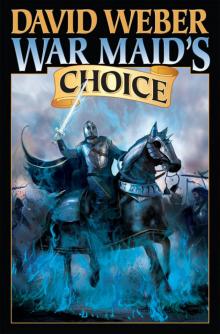 War Maid's Choice-ARC
War Maid's Choice-ARC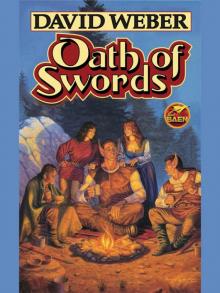 Oath of Swords-ARC
Oath of Swords-ARC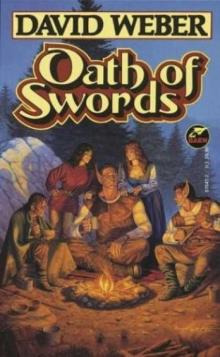 Oath of Swords wg-1
Oath of Swords wg-1 A Beautiful Friendship-ARC
A Beautiful Friendship-ARC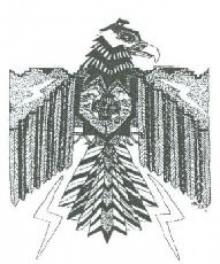 Sword Brother
Sword Brother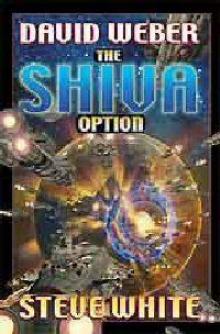 Shiva Option s-3
Shiva Option s-3 Sir George And The Dragon
Sir George And The Dragon Ashes Of Victory hh-9
Ashes Of Victory hh-9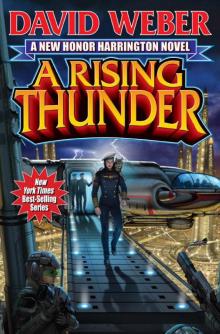 A Rising Thunder hh-13
A Rising Thunder hh-13 The Road to Hell - eARC
The Road to Hell - eARC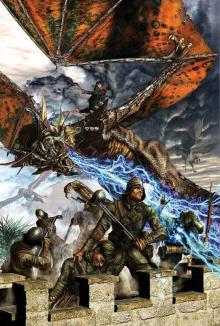 Hell Hath No Fury m-2
Hell Hath No Fury m-2 The Road to Hell (Hell's Gate Book 3)
The Road to Hell (Hell's Gate Book 3)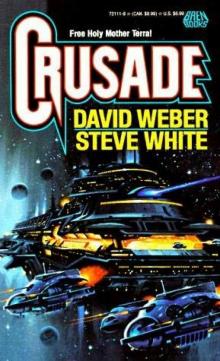 Crusade s-1
Crusade s-1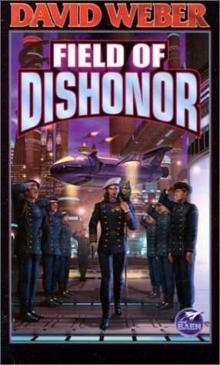 Field Of Dishonor hh-4
Field Of Dishonor hh-4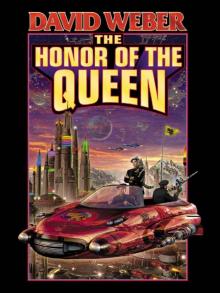 The Honor of the Queen
The Honor of the Queen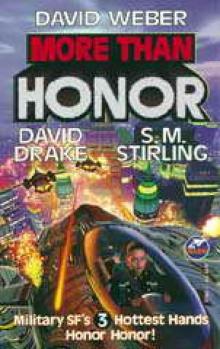 More Than Honor woh-1
More Than Honor woh-1 In Fury Born (ARC)
In Fury Born (ARC)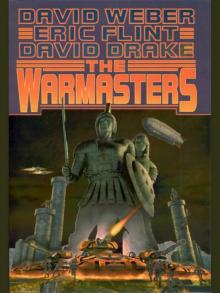 The Warmasters
The Warmasters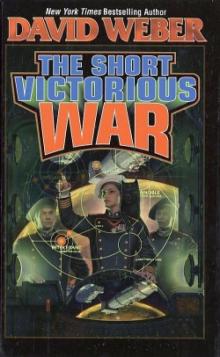 The Short Victorious War hh-3
The Short Victorious War hh-3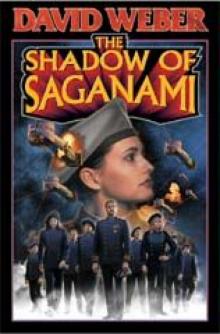 The Shadow of Saganami si-1
The Shadow of Saganami si-1 Empire of Man 01 - March Upcountry
Empire of Man 01 - March Upcountry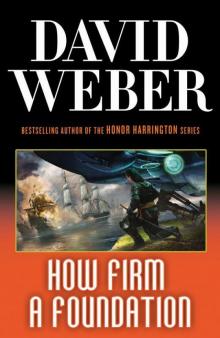 How firm a foundation s-5
How firm a foundation s-5 Treecat Wars
Treecat Wars